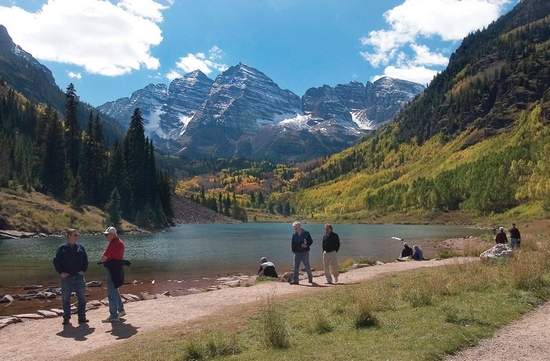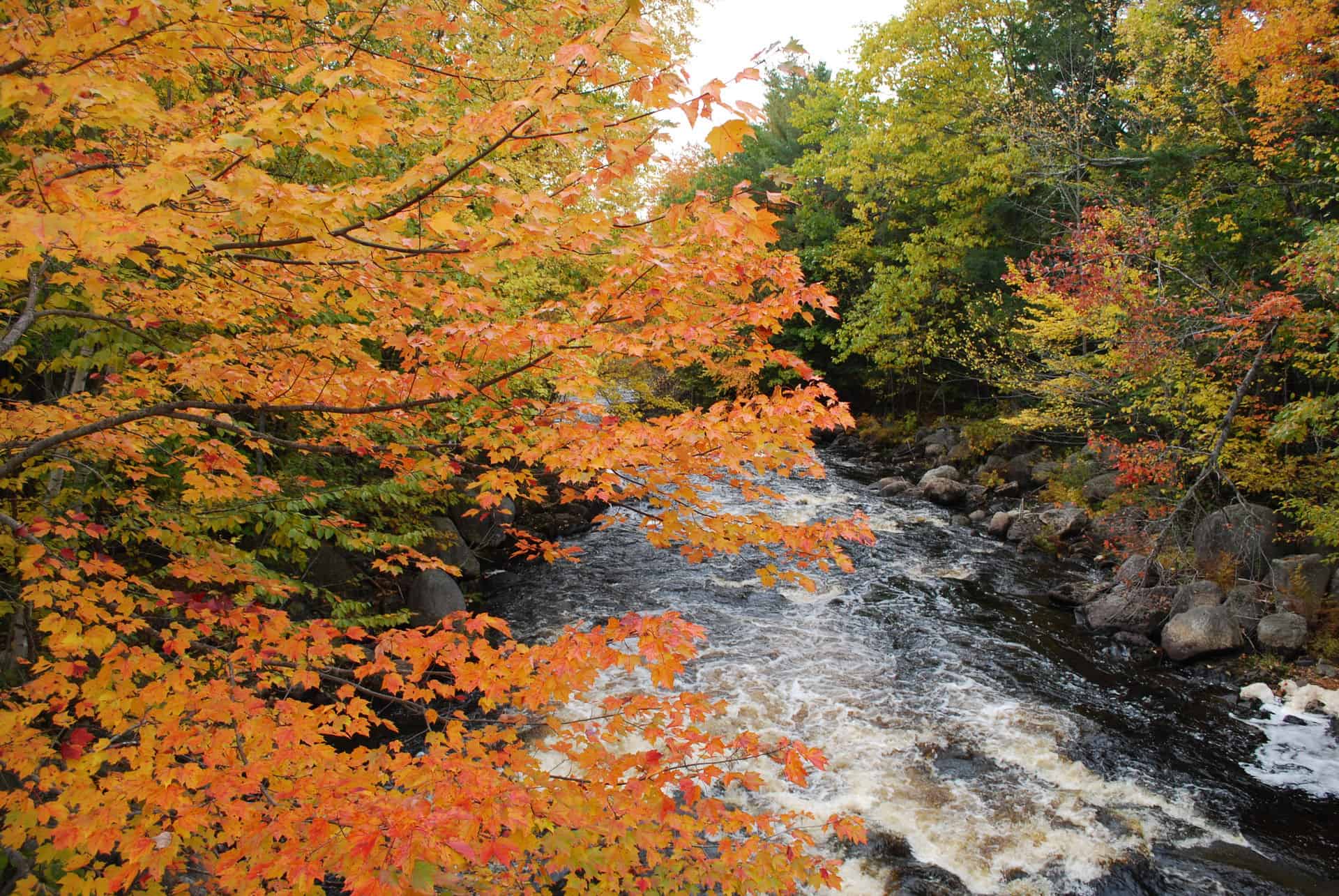When it comes to recreation in the White River National Forest, everybody wants a piece of the woods.
There were 144 outfitters and guides operating in the forest in 2010. They did everything from leading hunters into the backcountry by horseback to hauling bicyclists by van to Maroon Lake so they could coast down the paved road.
Skiers and snowboard riders use public lands at 11 ski areas forest-wide.
Hikers and backpackers have 2,500 miles of trails at their disposal and there are 751,900 acres of wilderness, where motorized and mechanized uses are prohibited.
Mountain bikers are always looking for new opportunities, occasionally building bandit trails then trying to legalize them later.
Dirt bikers and other off-road vehicle enthusiasts clamor for more terrain where they can operate machines capable of covering more than 100 miles on a good day of trail riding.
Snowmobilers, rock climbers, big peak baggers, paragliders, anglers, trail runners, backcountry skiers, picnickers, sightseers, nature lovers — everybody wants to spend time in the forest.
The result is about 9.2 million visits annually from people pursuing recreation in the White River National Forest — more than Grand Canyon and Yosemite national parks combined. Throw skiing out of the mix and you still get more than 2 million visits to the White River. Many of those visitors want to go to the same spectacular places at the same time of the summer.
“We’ve reached a point of saturation in some areas,” acknowledged Forest Supervisor Scott Fitzwilliams. “There are times you go to the Maroon Bells wilderness and you run into hundreds and hundreds of people.”
The age of industrial tourism
Valley native Tony Vagneur has witnessed the surge in tourism in the forests surrounding the Roaring Fork Valley over the last five decades. When he was a kid growing up in Woody Creek his family would run 1,200 cows and calves onto 30,000 acres in the Kobey Park area above Lenado. The cows had the place nearly to themselves — no off-road vehicles, no mountain bikes, only occasional hikers and hunters.
It was even possible to find solitude on visits to scenic backcountry lakes.
“I clearly remember in 1965 or ‘66, my great uncle Tom Stapleton and I went deer hunting at Maroon Lake,” Vagneur recalled. It was October and the fall colors were in full splendor. Nevertheless, they were the only people there, he said. They actually hunted right around the lake.
Visit Maroon Lake on a sunny October day these days and you will be sharing the views with hundreds of other sightseers. Maroon Lake has fallen victim to what the late Edward Abbey labeled industrial tourism. Like many national parks, the Maroon Bells Recreation Area is so popular that access is restricted during the heart of summer and bus service is required to move the masses.
Vagneur also hiked one recent summer to Capitol Lake, a place he had visited several times before and often found a fair degree of solitude. On the latest trip, he found 13 occupied campsites around the stunning, high-altitude lake.
“You might as well be camping out in Paepcke Park,” he said.
The lake is a popular destination for climbers tackling Capitol Peak, which looms over the lake. As bagging 14ers — the peaks in Colorado that exceed 14,000 feet in elevation — has grown more popular, so has the pressure on the backcountry surrounding those peaks.
Changing trends
Martha Moran, recreation staff officer for the Aspen and Sopris Districts, has watched backcountry and wilderness use patterns evolve for more than a decade since she joined the office. Among her observations: Hunting in the Aspen area has declined significantly; forest visitors are taking shorter-duration trips; and people are willing to sacrifice solitude to visit the most scenic areas.
It seems that travelers stick around more for long weekends rather than week-long trips, Moran said, so they are determined to see hotspots like the Maroon Bells on their brief outing, regardless of crowds. That concentrates more visitors into fewer sites.
“People are attached to special areas,” Moran said. “They aren’t going to the deep, dark woods.”
When they do venture further into the backcountry, it tends to be concentrated on routes made popular by coverage in magazines like Backpacker, Outside and National Geographic Traveler, Moran noted. The Four Pass Loop — which makes an incredible 26-mile journey over Buckskin, Trail Rider, Frigid Air and West Maroon passes — offers unparalleled beauty, but it’s tough to avoid crowds in July and August.
To some degree, the cash-starved Forest Service is addicted to industrial tourism. While most areas in the forest can be visited without paying a fee, the agency still capitalizes on payments for recreational uses. It collected $372,840 in 2010 from fees charged to outfitters and guides, educational institutions and organizers of special events, such as a backcountry marathon.
In addition, the fees charged at Maroon Bells, Vail Pass Winter Recreation Area, Green Mountain Reservoir and the handful of campgrounds that it still operates totaled $607,611 last year.
The agency also reaps fees from the 11 ski areas with special-use permits. Aspen Skiing Co., for example, paid nearly $1.4 million last season to lease public lands for its four ski areas.
The greater the number of outfitters and guides, the greater the number of visitors to the Maroon Bells and the greater number of skier and snowboard riders, the more money the Forest Service collects.
Many of those funds are plowed back into forest projects or are used to hire staff such as backcountry rangers, but some of the funds simply vanish into the U.S. Treasury.
Feds use management tools
The Forest Service is adapting to the recreation explosion. Researchers for the agency have found little public support for limiting the number of hikers on trails or visitors to certain areas to ease the crush of crowds. But forest lovers will support limits designed to protect the ecosystem, according to the agency’s research.
The White River National Forest uses various management tools to ease the human impact:
• Permits used to be issued to outfitter and guide with few questions asked. Now the agency performs a capacity analysis on every proposal to determine if there is a need for additional permits. Special event requests using forest lands also get thorough scrutiny.
• The Travel Management Plan released last summer closed 692 miles of bandit trails, constructed or used illegally, and decommissioned another 519 miles of routes from the White River National Forest’s official inventory. In many cases, the agency couldn’t afford to maintain all those routes, Fitzwilliams said.
• Wilderness designation prohibits motorized uses, such as Jeeps and dirt bikes, as well as mechanized uses, such as mountain bikes. Trails outside of wilderness often have restrictions.
• Other rules have been in place for decades to prevent us from loving our special places to death. Camps must be a certain distance away from high-country lakes. Wilderness rangers vigorously enforce the rules at the most heavily visited areas such as Snowmass Lake, Fryingpan Lakes and Crater Lake. The Aspen Ranger District recently beefed up restrictions at Conundrum Hot Spring, placing limits on the camps near the springs and prohibiting dogs from the upper valley.
Nevertheless, the special places still get overwhelmed. West Maroon Pass on a weekend in July and August resembles the pilgrimage route to Mecca.
In other, less pristine areas, the experience is different. It remains much as it was decades ago. Vagneur likes visiting the Hunter-Fryingpan wilderness, north of Aspen and up the Fryingpan Valley. “If you go in there a day [of travel on foot or horseback], you can be the only person there,” he said.
Vagneur is a volunteer with the Forest Service. During big game hunting seasons, he often roams the hills above Lenado on horseback to visit hunters’ camps. He answers a lot of questions and tactfully offers advice, like urging hunters to haul out trash. He had made the rounds for 15 straight years until taking a break this year.
“The numbers have gone down since ‘08, the recession year,” he said. Even before that, the numbers of hunters were in decline.
Part of the problem is user conflicts, as Vagneur sees it. Dirt bikers have turned the Kobey Park and Sloan’s Peak area into a near exclusive playground. Their sheer numbers overwhelm hikers and equestrians. The result is all the trails have been rutted down about three feet, forcing dirt bikers to make new trails alongside the old ones.
“The dirt bikes have just totally trashed the area,” Vagneur said. “You can’t walk on any of the trails up there.”
Conflicts can’t be helped
But dirt bikers are also feeling squeezed in the White River. The Forest Service is funneling them into fewer areas even though it is a growing endeavor. That creates high concentrations that can lead to trail damage.
Dirt biker Traci Schalow of Carbondale understands the frustration some users feel while about having the share the forest, but feels most people are understanding and cooperative with one another.
“I am the multi-user,” she said. “I like backcountry skiing. That is my thing.”
The explosion of extreme sports has lead to more people in the backcountry, Schalow said. She no longer ventures to Marble Peak, a popular backcountry ski area. “You can’t even find parking anymore,” she said.
Schalow feels that dirt bikers get a bad rap as people who don’t care about the environment. She is trying to do something about that (see related story). She said many riders enjoy the outdoors for the same reasons as mountain bikers and hikers.
“I find joy in the backcountry whether it’s skiing in the winter or dirt riding in the other seasons,” Schalow said. “Dirt bikes are a great mode for accessing wild places, especially areas that have distances prohibitive on foot or bicycle, unless you have several days to access it.”
She said there is a camaraderie in dirt biking that she hasn’t experienced in her other pursuits — mountain biking, trail running and backcountry skiing. “It’s a ‘we’ sport, more than any other sport I have participated in,” Schalow said.
Aspen Ranger District’s Moran said the White River National Forest probably experiences more users conflicts than forests closer to urban areas. The reason — so many passionate forest users. Dirt bikers want single-track trails while families want gentle backcountry roads to tour with their families. There are “flamboyant huckers” who use snowmobiles to get at powder-filled backcountry cliffs and there are cross-country skiers seeking solitude, according to Moran.
“It’s conflicts over access, really,” she said.
And that creates management headaches. Moran noted the “conundrum at Conundrum.” An environmental group called Wilderness Watch says the Aspen Ranger District’s recent limits on camping at Conundrum Hot Springs don’t go far enough to protect the area while some hot springs enthusiasts blast the agency for overreacting to alleged problems.
“There’s a lot of passion on how we manage our public lands,” Moran said.
The Forest Service has gone increasingly toward a “capacity limit” style of management. It examines the effects of human waste, user conflicts and quality of experience while contemplating rules.
“We’re trying to prepare for the next 70 years,” Moran said.
She personally feels that will force the Forest Service to sets limits on access to popular areas, at some point.
“I can visualize that’s where we’ll have to go eventually,” she said.







 A recent Bangor Daily News article
A recent Bangor Daily News article